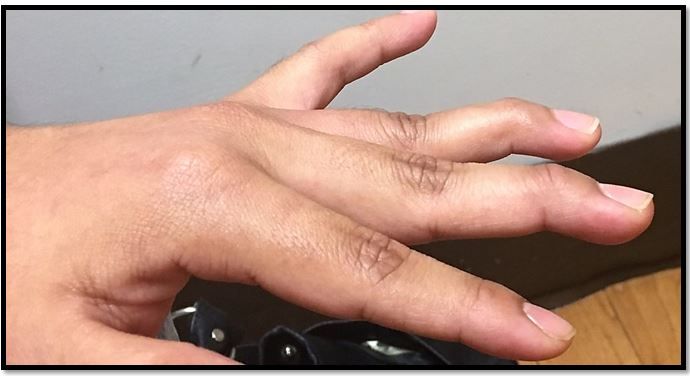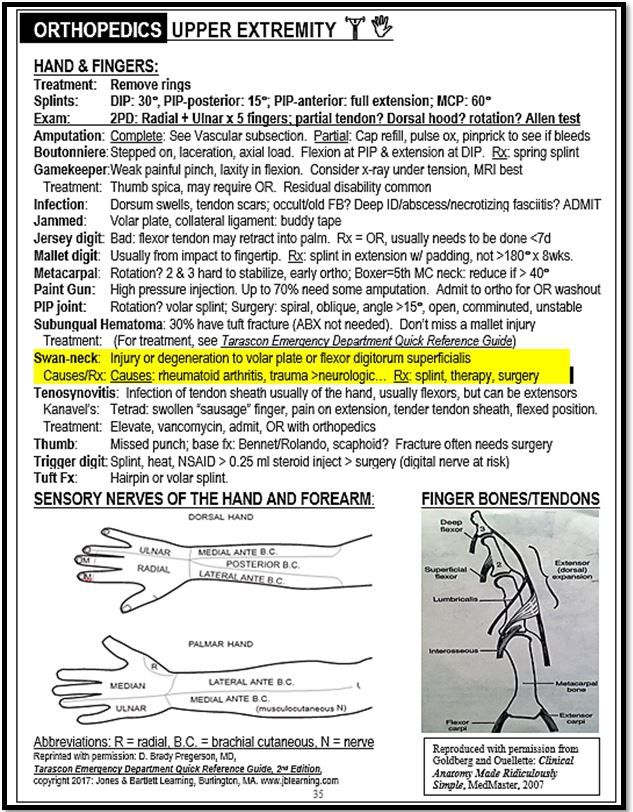Funky Finger - What's Your Diagnosis?
What does a common species of water fowl have in common with this finger injury?
Figure 1. (Please click to enlarge)

Figure 2. Page shot from The Emergency Medicine 1-Minute Consult Pocketbook

History
A 37-year-old woman presents to the emergency department with finger pain after slamming her ring and middle fingers in a car door. She denies any prior finger injury or any medical problems. She states her middle and ring fingers are “stuck” in the position shown in Figure 1, at right. She denies any numbness, tingling, or other complaints.
Examination
Vital signs were normal except for a pulse of 101 beats/min which normalized with pain medication and observation.
Physical examination was normal except for image in Figure 1 (please click on image to enlarge).
Initial concerns
- Fracture
- Dislocation
- Tendon injury
Testing
- Radiographs of fingers showed no signs of fracture
Questions
1. What does the case image show?
2. What should you do next?
Please click below for answers and discussion.
Answers
1. What does the case image show? Swan-neck deformity
2. What should you do next? Splint and arrange follow-up with an orthopedist or hand specialist
Discussion
Swan neck deformity is a rare condition that usually develops gradually in rheumatoid arthritis or acutely or subacutely after blunt or penetrating trauma to the flexor digitorum superficialis or to the volar plate at the proximal intraphalangeal (PIP) joint. Note: The opposite injury-trauma to the dorsal hood of a finger extensor at the PIP joint-causes a boutonniere deformity (see page shot in Figure 2).
Management of a swan neck deformity should include finger splinting initially, followed by evaluation by a hand specialist and occupational therapy. In refractory or severe cases surgical repair may eventually be required.
Case conclusion
The patient followed up with a hand surgeon and was doing well after 6 weeks in a finger splint for each involved digit.
Note: Excerpt on Swan Neck Deformity from The Emergency Medicine 1-Minute Consult Pocketbook